Japan’s neighborhood watering holes
The humble kakuuchi nourishes the cyclical rhythms of urban life
Welcome new subscribers! Around 700 of you (!) signed up while I was on vacation earlier this month in Manazuru, a little seaside town two hours south of here. A few days before, I had given a 15-minute talk in Tokyo about my work preserving public baths with Sento & Neighborhood and transforming vacant houses into a community store and library at Onomichi Labyrinth House. Craig Mod was in the audience and picked up the talk’s thread of Tokyo’s urban commons in his newsletter a few days later, and kindly directed a lot of you here.
Thanks a million to Craig, and thanks to all of you for thinking what I do is worth reading. With Manazuru still on my mind and given that most of you found your way here from Craig’s post, here’s something in the same spirit.
Kakuuchi are neighborhood living rooms
For years I’ve admired Craig’s eloquent depictions of the people he encounters in the classic cafes known as kissa that endure in the quiet corners of Japan’s cities. His writing speaks to the same value that’s drawn me to bathhouses over the past decade—their role as little oases of humanity amid the more stifling and alienating aspects of the urban condition. Sento and kissa are two of the great common spaces of Japanese neighborhood life. The kakuuchi is a third.
If you’ve never heard of a kakuuchi, you’re in good company. Many Japanese people don’t know what the word means.1 A kakuuchi is a style of liquor shop (retail license, not restaurant) where you can pull a beer out of the fridge, grab some crackers or canned tuna off the shelf and plop yourself on a stool. No seat charge, no significant markup. The owner usually lives upstairs and doesn’t make much profit (most are wholesalers by day). That’s it. A kakuuchi is a neighborhood living room that anybody can walk into.
We settled on our apartment in Tokyo after I realized my favorite kakuuchi in the city was around the corner. I often get lured in by the red lamp on my evening walks to the vegetable stand or rice shop. The master has a collection of guitars on the walls, and jazz vinyls purr through his custom sound system. All the seats face towards the center and everyone says hello (and often toasts) to newcomers. Arriving in big groups is against the rules. I keep a bottle of whiskey on the shelf (glass of ice: $0.30), but usually go for a $2 draft. Need to take a pee? Walk behind the counter and through the owner’s literal living room to find the bathroom at the back of the house.
Many kakuuchi are located near sento, part of the local ecosystem of establishments that follow the daily rhythms of the bath. I always cool off at Ietani-san’s place after bathing at Teikoku-yu across the street in Nippori. Take a seat on a stack of cardboard in the (very) cluttered shop and chat him up, and he’ll pull out old photos and tell you about evacuating to Noto during the war, or when half-naked people came running across the street during a bathhouse fire in the 1950s. The product selection seems to go back in time the further you look in the corners, until products stop being products and enter the realm of the forgotten.2
Places like this often feel outside of time, or at least the sort of time that prevails in the city today, where the value of space is measured in rent and other durations, and time is turned into money. A kakuuchi does not exist to make money. Its shelves fill up not with best-selling products but the rarely touched “keep” bottles of community members. Henri Lefebvre writes that nature and traditional life are animated by cyclic rhythms—physiological, social, seasonal, each nested within others. Capitalist modernity tends to break these apart and straighten them out into linear rhythms of production and commodity flows. But the body—at least mine—cannot thrive on 7/11s alone, it needs the rhythms of a local place.
That brings me back to my trip to Manazuru. As far as kakuuchi go, Kusayanagi Shoten, just up the hill from the sleepy fishing port, had it all—walls adorned with retro hand-painted signs for local sakes and landscape paintings by one of the regular customers, a bank of fridges full of canned beers and soft drinks, trays of dry snacks. This was my kind of joint. And most of all it had “Ah-chan,” the octogenarian matriarch of the place, sitting on a roller chair next to the desk, her little white slippers dangling a good distance off the floor.
It was the day after the summer festival, the once-a-year cycle when the men carry the omikoshi shrine into the sea, and a half-dozen young folk were still in a festive mood. Ah-chan’s one-year-old great-grandson, home for the celebration, was waddling around with his friend.
We pulled up some stools and began chatting. She’s been running the place for 65 years, since she came from Odawara at 20 and married into the family. The shop has been around for 100 years, but they trace their roots in town back 320 years, to a line of Shinto priests. Ah-chan says the chit-chat usually gets going around late evening, and often continues till the wee hours of the morning. “Every day there’s young folk in here, it never gets old!”
Hers seems like a nice way to grow old (“I’m a bit different than your standard obachan. I love being in business!”), but one that requires a local community oriented around people and places. Just the sort of thing being smoothed out into linear rhythms in the city.
Yet the idea of the kakuuchi does not seem to be dying. My neighborhood spot and Kusayanagi Shoten only shifted from their wholesale business when the younger generation got involved. Kakuuchi were front of mind when we designed our community space at Inari-Yu Nagaya. And like sento, they often come up in conversation with the post-growth urbanists I meet across Japan.3 A kakuuchi is an instant community commons: just flip some crates over and you’re in business. It takes time and repetition for the cyclical rhythms to form, to become a true living room and a watering hole that nourishes a neighborhood, but then it’s a beautiful thing.
Kakuuchi (角打ち) literally means “tap the corner.” Back in Edo times, when sake was distributed in big bottles, people would take little square wooden cups to the liquor shop to buy a serving to take home—except sometimes, when they’d “tap the corner” on the spot.
For a sense of Ietani Shuten, enjoy the photos in this blog post.
We were introduced to Kusayanagi Shoten by the lovely folks at Manazuru Publishing


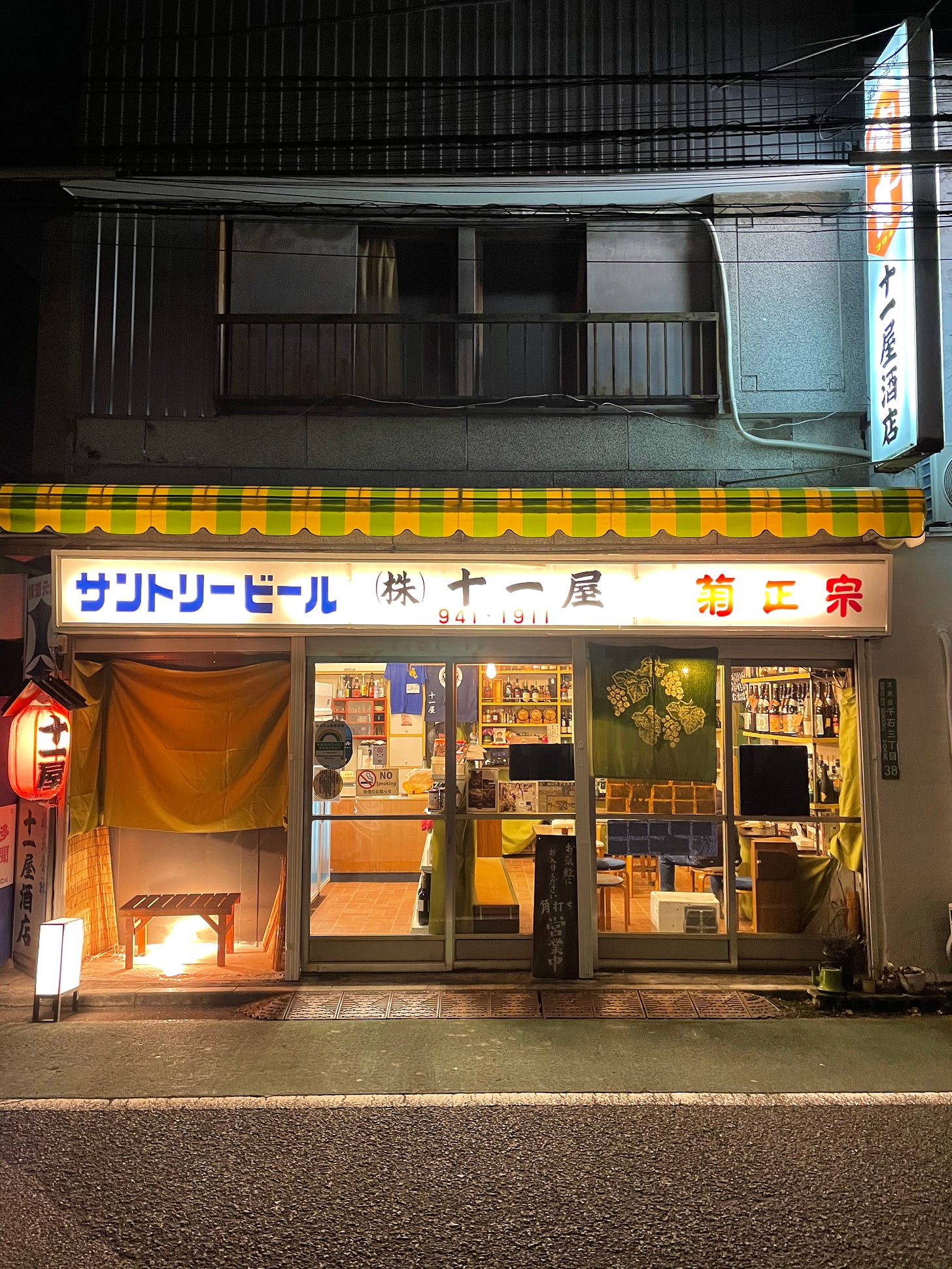
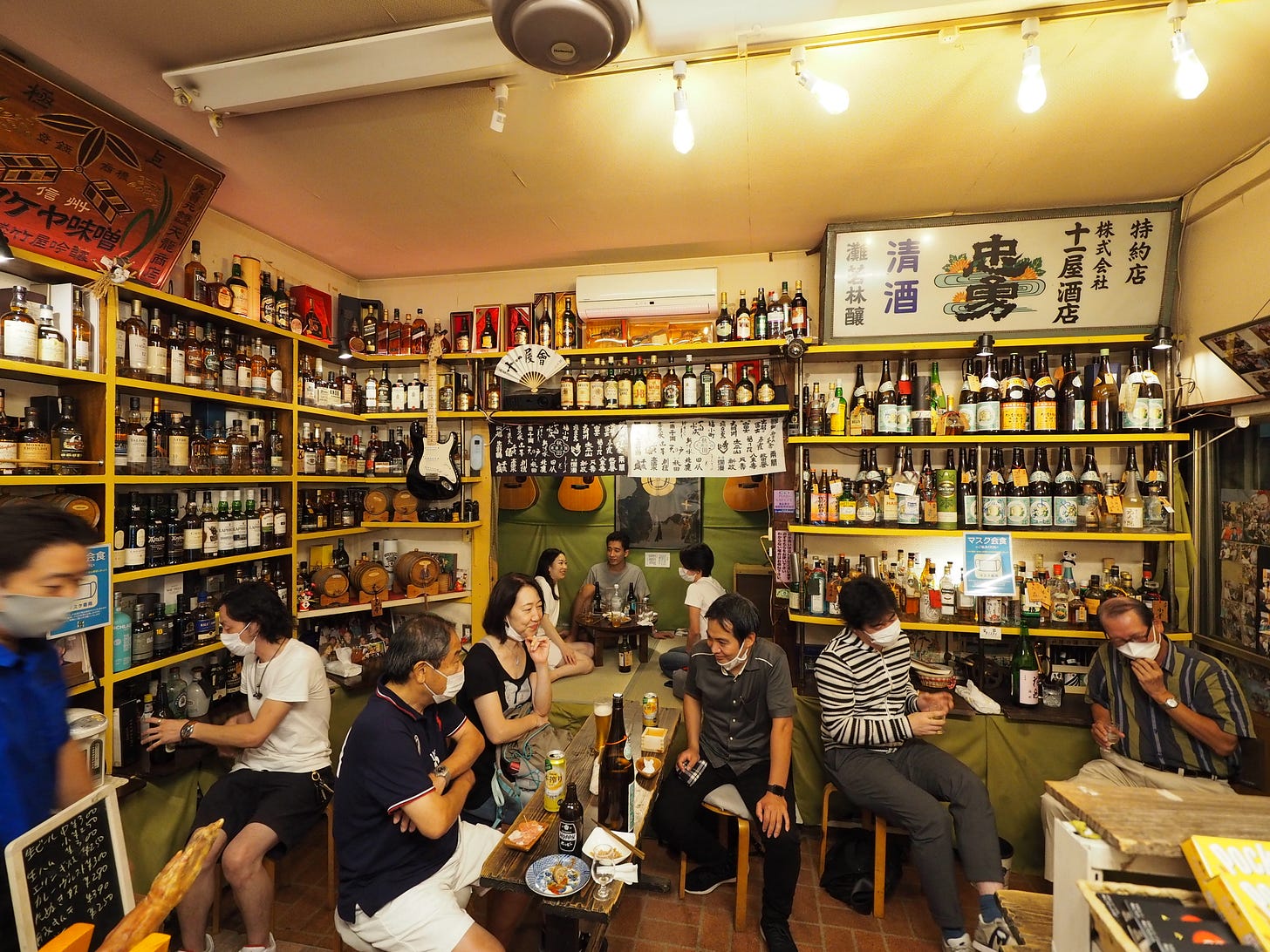
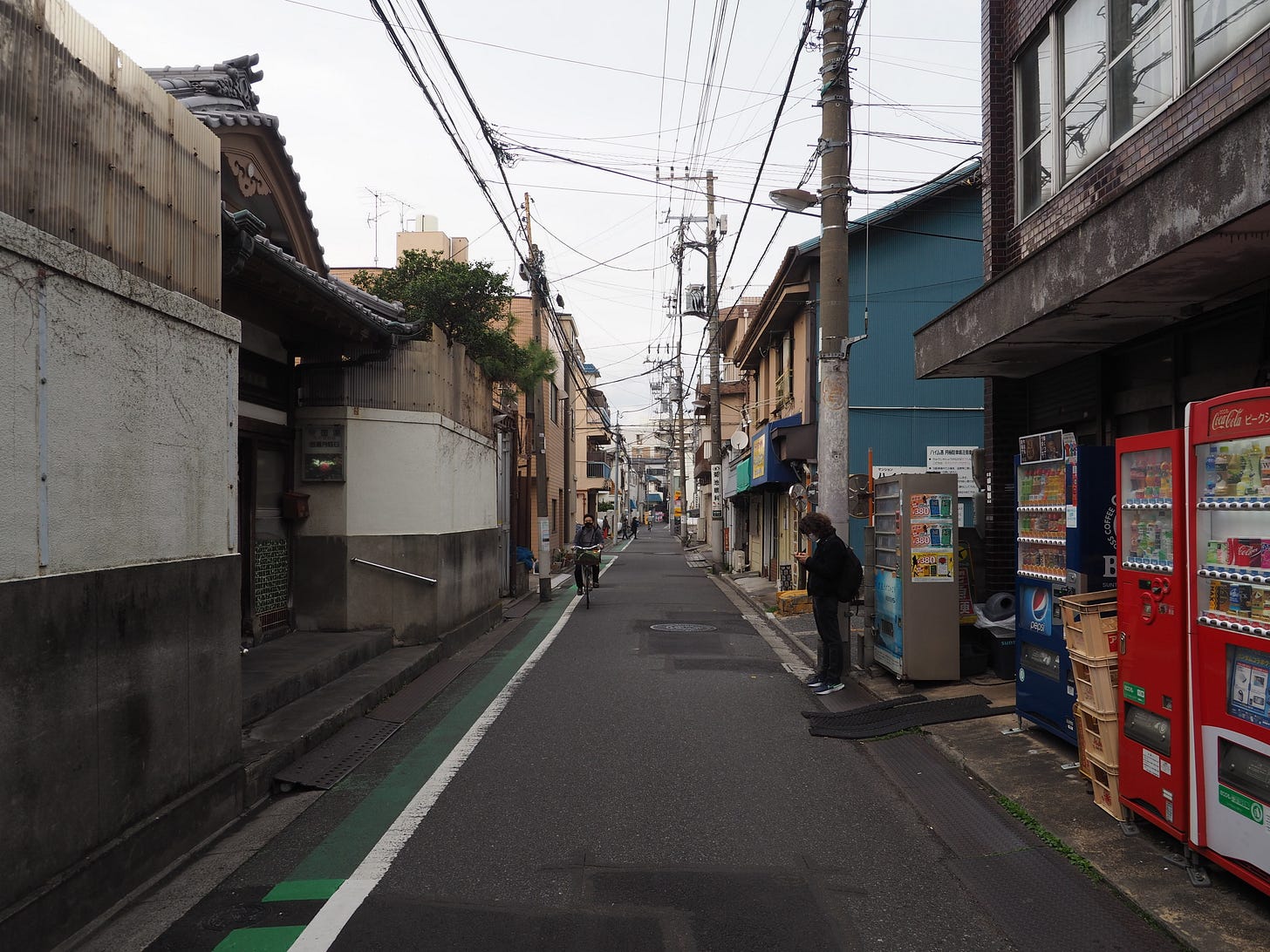
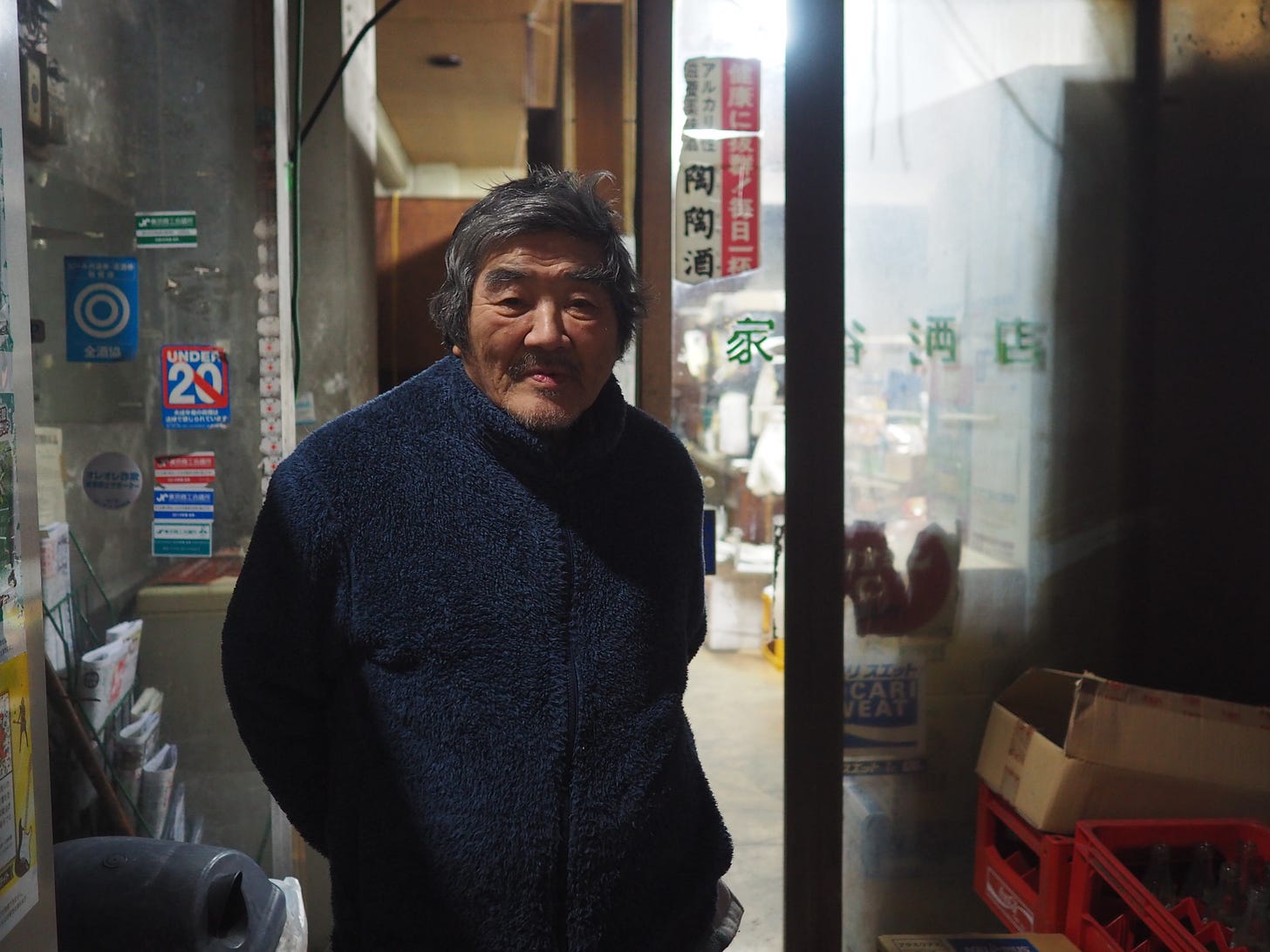


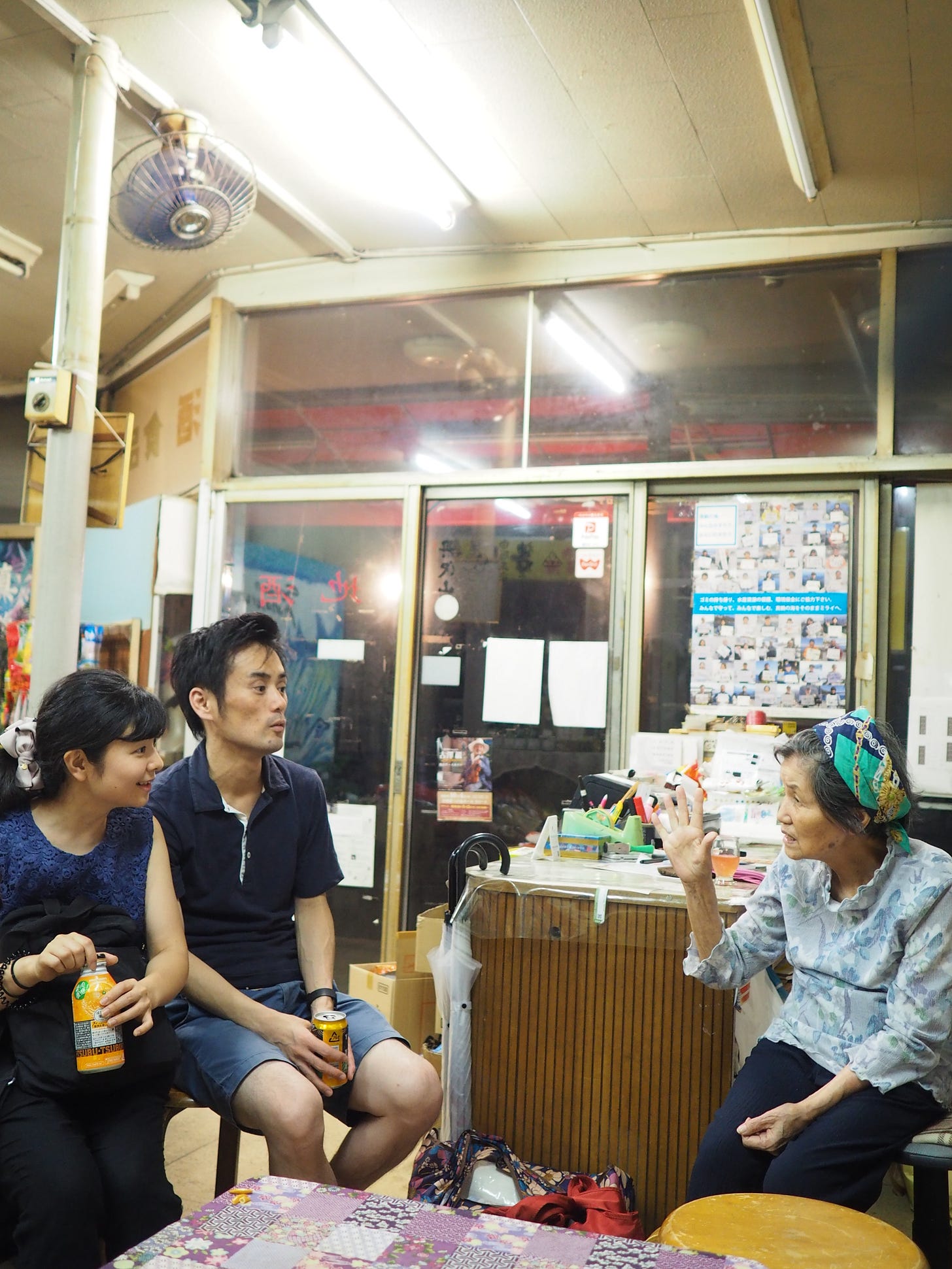
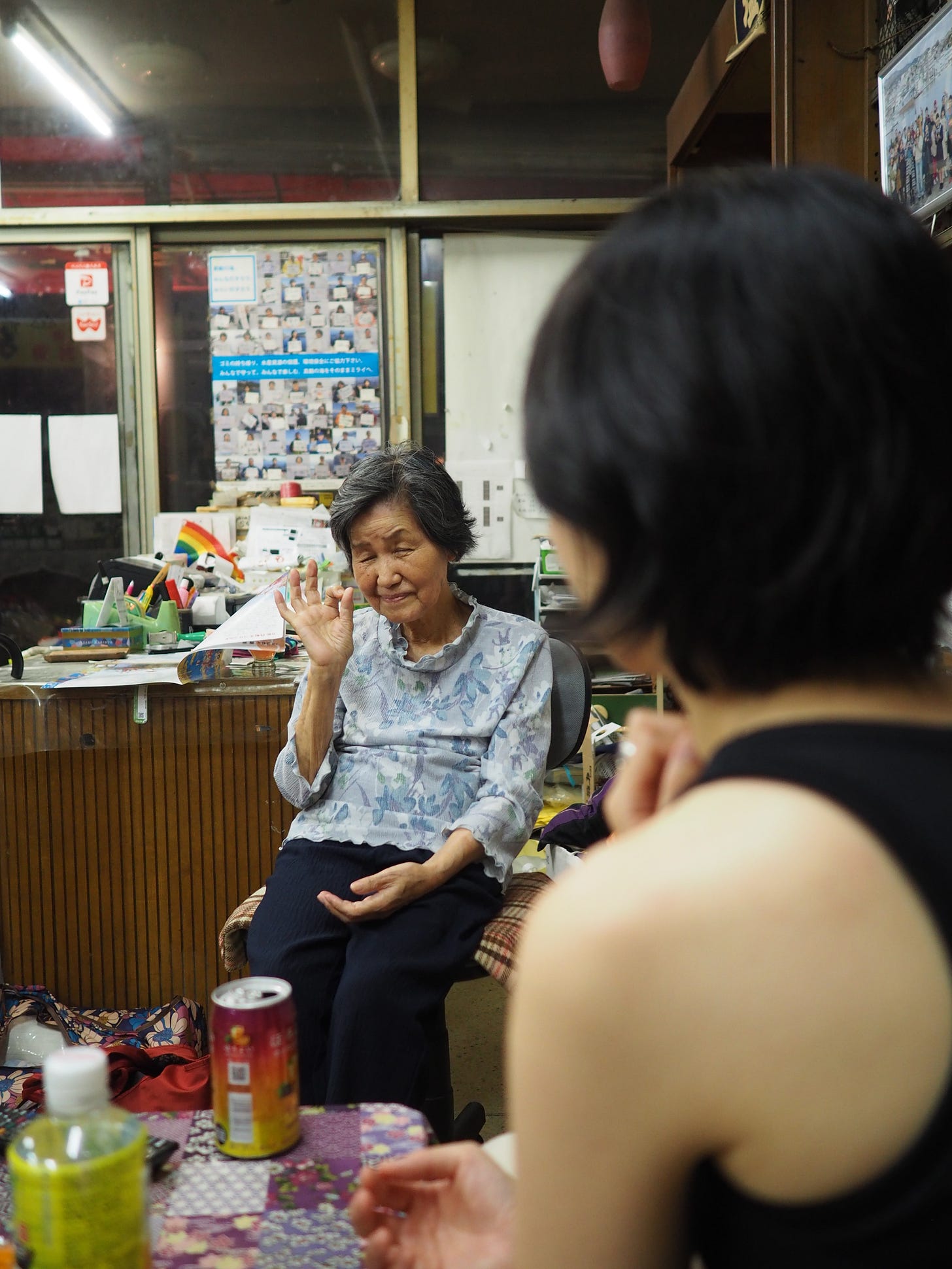
So good. Thanks for sharing this.
Big fan of the kakuuchi. Great one called かとう just 2-3 mins from Gotanda stn.
They remind me of old bars you might find in small rural Irish towns, that unfortunately are disappearing rather quickly these days. Often the bar would have been located in a general grocery shop. One even offered undertaking services!
Only issue I have with the ones in Japan is they are often so "traditional" that they continue to allow customers to smoke freely. A big turn off for me.